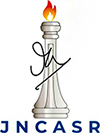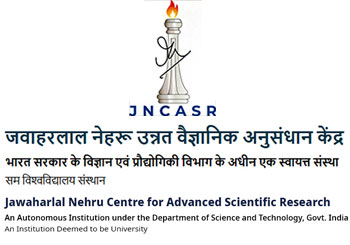MD@60: JNCASR-CECAM Conference
About the Conference
Sixty years after the pioneering paper “Correlations in the Motions of Atoms in Liquid Argon” by A. Rahman, Physical Review A 136 (2): 405-411 (1964),
Molecular Dynamics (MD) has become a ubiquitous and critical resource for research not only in the physical and life sciences, but also in engineering.
Thanks to the foundational work of pioneers like Anees Rahman, plus the efforts of the subsequent generations of brilliant researchers, who have focused on algorithms and methodological developments, MD has evolved from the engine procuring the time evolution of simple model systems to the underlying tool yielding a mechanistic understanding of frontier problems in both fundamental and applied science, as well as in engineering.
The breadth of research employing MD is astounding, ranging from modern approaches for tackling rare events, and systems out of equilibrium, to large-scale simulations employing increasingly sophisticated models for the interatomic interactions, which are now more and more based on Machine Learned potentials, rather than semi-empirical approaches. These modern developments concomitant with the ever-growing power of computational resources, means that MD is now routinely used to describe phenomena at size and time scales hardly imaginable in 1964. For example, milliseconds length simulations of biological systems containing literally millions of atoms have led to remarkable progress in understanding the structure and function of Nature’s nanoscale molecular machines, which in turn has greatly aided in designing drugs to fight diseases. Similarly, simulations at the scale of literally billions of atoms have advanced our understanding of processes occurring in solid-state mechanics. Such methodological and technological developments, along with key applications, have brought us to the point where MD has already had a concrete societal impact. Even more exciting is the prospect of future simulations leading the design of quantum materials, which are not only going to be vitally important for application in energy science, but also for the next generation of devices. The MD toolbox will also lead the synthesis of new generations of catalysts that will be needed to ensure the sustainability of our environment.
At this conference, we shall celebrate Anees Rahman’s pioneering contribution to MD simulation 60 years ago by bringing together leading experts, along with the new generation of practitioners in the field, to showcase and explore not only the history of the field but also the latest methodological developments.
- Back to previous page
- |
-
Page last updated date:10-03-2025 01:22 PM























